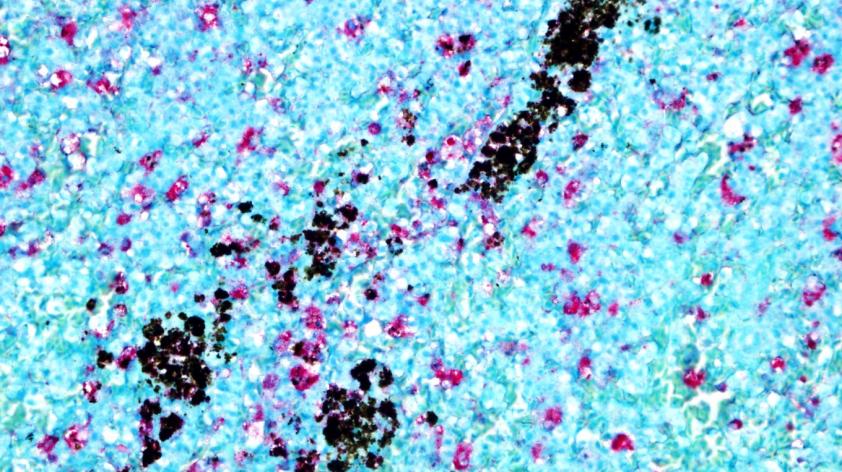
What’s killing the crows?
As a pathologist in Disease Investigations, one of my roles is protection of our vast animal collection through surveillance of diseases in native wildlife. Our two facilities, the Zoo and Safari Park, not only provide homes for exotic animals from around the globe, but also for native birds and mammals. If any of these animals die on our grounds, our staff performs necropsies (animal autopsies) on them to determine the cause of death and to monitor certain infectious diseases that could impact other wildlife, our collection animals, or even people.
Two of the more common types of bird we receive from the Safari Park are crows and ravens. These large black passerine birds are in the family Corvidae, which also includes jays, and are known for being intelligent, noisy and omnivorous. Among veterinary pathologists, they are also known for their susceptibility to certain important avian diseases, which makes them good sentinels in disease surveillance. Three diseases we’ve seen in corvids this year are shown and discussed below.
Avian Poxvirus
See Image 1 below.
What are all those ugly nodules around the eye and beak of this crow? They are the characteristic lesions of avian poxvirus, a viral infection that can affect many types of birds. The proliferative and crusty skin lesions often occur on the head, legs and feet and are self-limiting in mild cases. Severe cases, however, can compromise the bird’s ability to see and eat, especially if they extend into the nasal or oral cavities. Only affecting birds, this virus is spread by direct contact or biting insects, like mosquitos, that can mechanically transport the virus from one bird to another.
Hemoparasites
See Image 2 below.
The spleen of this crow is enormous! We call this condition splenomegaly, and it is one of the most common necropsy findings in corvids. The spleen is an organ responsible for immune surveillance of disease-causing agents (pathogens) carried in the blood, and it reacts to these agents by swelling with proliferating immune cells. Some possible causes are shown in Image 3 below.
Image 3 shows blood cells from a raven that contain various forms of hemoparasites (arrows). These come in three types, Plasmodium sp. (malaria), Hemoproteus sp., and Leukocytozoon sp., and if too many red blood cells are infected and destroyed, or if the parasites damage the blood vessels, severe disease may develop. These parasites are all avian-specific, and the malaria species are not the same ones that cause this disease in humans. They are spread by mosquitos and are major problems in birds that have not co-evolved with these pathogens, like the critically endangered Hawaiian crow (‘Alala) and penguins.
West Nile Virus
See Image 4 below.
This somewhat abstract image shows one of the most significant infectious diseases in corvids in the United States – West Nile virus. The bright pink spots are numerous cells of the spleen infected with WNV and detected with a special staining process called immunohistochemistry (IHC). Do you also notice all the black pigment in this image? That is derived from the breakdown of red blood cells and indicates that this crow was also infected with hemoparasites.
West Nile virus was first introduced to the US in 1999 and rapidly spread across the country. Our native corvids are particularly susceptible to this virus, and their death in large numbers in New York, investigated by a zoo pathologist, was key to recognizing the arrival of WNV. We continue to monitor the presence of this infection in wild birds with the help of the San Diego County Vector Disease Diagnostic Laboratory, to which we send tissues for diagnostic testing. Many of our collection birds receive regular vaccinations against this virus. What spreads WNV? You guessed it – mosquitos! And this is the one disease discussed here that can also cause a serious disease in humans. When we start seeing it in the native birds, we ramp up our mosquito control measures, like eliminating small pools of standing water. We recommend you do the same and protect yourself from mosquito bites!













